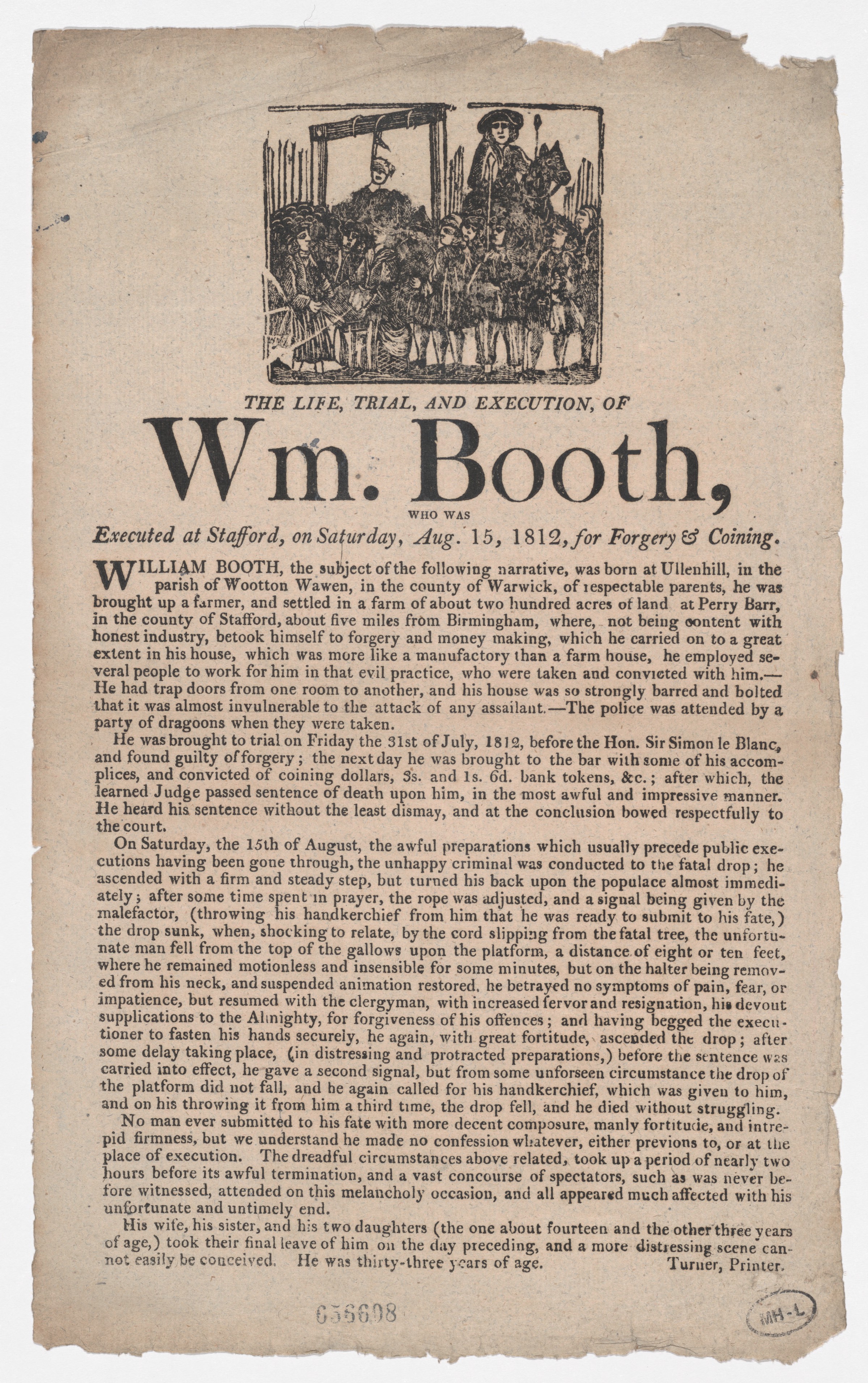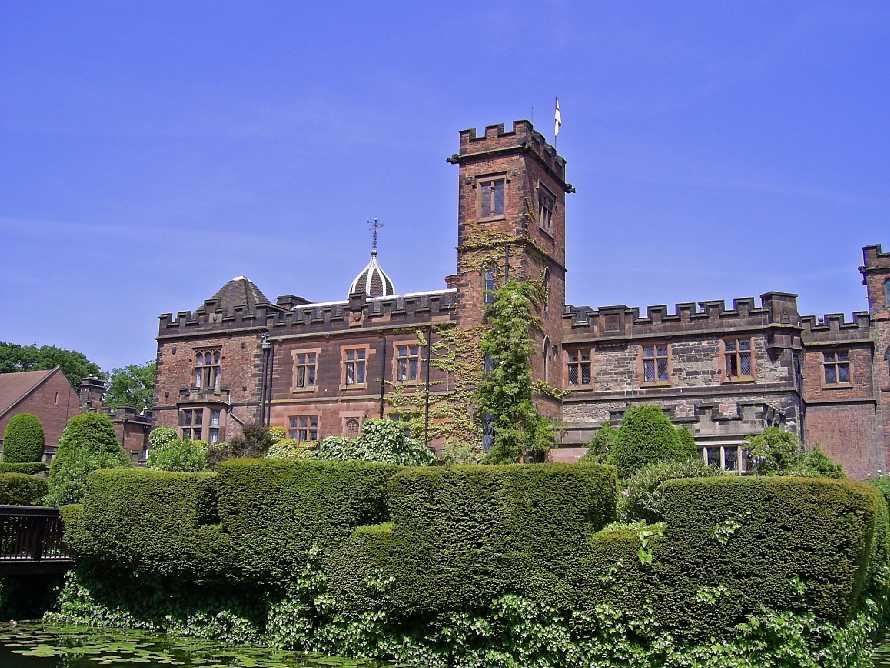|
Queslett
Queslett is an area of Great Barr, on the border of Birmingham, and Aldridge, England. The name (originally Quieslade) has been in use since the 16th century. The first part, from "Queest", means a wood pigeon, the second comes from the Anglo-Saxon "slade", for a small valley. Another old spelling, Queeslet, appears on Victorian maps and postcards. The area was in Staffordshire, until part was absorbed into Birmingham, then in Warwickshire, in 1928; the Aldridge side became part of Walsall Metropolitan Borough in 1974, when Walsall and Birmingham also became part of the West Midlands county. In 1810, in ''A Complete History of the Druids'', T G Lomax described the area: (the later being a reference to Robert Plot's ''Natural History of Staffordshire''). The area was mostly developed with private housing from the 1930s onwards, and is centred on the A4041 Queslett Road between West Bromwich and Sutton Coldfield, overlooked by Barr Beacon. A former sand quarry, on the site ... [...More Info...] [...Related Items...] OR: [Wikipedia] [Google] [Baidu] |
Great Barr Hall
Great Barr Hall is an 18th-century mansion situated in the Great Barr district of Pheasey, historically in Staffordshire and now part of Walsall, West Midlands, England. It has associations with the Lunar Society and is a Grade II listed building. It is, however, in a very poor state of repair and is on the Buildings at Risk Register. History The Scotts In the mid-17th century, Richard Scott acquired the house then standing on the site and known as Nether House. In about 1777, Joseph Scott (later Sir Joseph Scott, 1st Baronet Scott of Great Barr) replaced the old house with a two-storey, nine-bay mansion in the Strawberry Hill Gothic Revival style. The house was much altered and extended about 1840 and in 1863, an adjacent chapel (which was never consecrated) was erected to a design probably of architect George Gilbert Scott, a friend – but not a relation – of Sir Francis Scott. Two of the extant lodge houses are believed to be by George Gilbert Scott. The chapel had win ... [...More Info...] [...Related Items...] OR: [Wikipedia] [Google] [Baidu] |
Queslett Nature Reserve Fingerpost - 2020-07-16 - Andy Mabbett - 02
Queslett is an area of Great Barr, on the border of Birmingham, and Aldridge, England. The name (originally Quieslade) has been in use since the 16th century. The first part, from "Queest", means a wood pigeon, the second comes from the Anglo-Saxon "slade", for a small valley. Another old spelling, Queeslet, appears on Victorian maps and postcards. The area was in Staffordshire, until part was absorbed into Birmingham, then in Warwickshire, in 1928; the Aldridge side became part of Walsall Metropolitan Borough in 1974, when Walsall and Birmingham also became part of the West Midlands county. In 1810, in ''A Complete History of the Druids'', T G Lomax described the area: (the later being a reference to Robert Plot's ''Natural History of Staffordshire''). The area was mostly developed with private housing from the 1930s onwards, and is centred on the A4041 Queslett Road between West Bromwich and Sutton Coldfield, overlooked by Barr Beacon. A former sand quarry, on the site ... [...More Info...] [...Related Items...] OR: [Wikipedia] [Google] [Baidu] |
Lunar Society Moonstones
The ''Moonstones'' () are a set of nine carved sandstone memorials to various members of the Lunar Society. Made in 1998, and unveiled in March 1999, they can be viewed in the grounds of the Asda supermarket in Queslett, Great Barr, Birmingham, England. They are visible from the highway, when travelling from Aldridge Road into Queslett Road, toward the Scott Arms, and face outwards from the supermarket. They depict nine members of the Society and attributes connected with their work, in order from Aldridge Road round to Queslett Road: *Josiah Wedgwood: portrait and three women from a jasperware design *Erasmus Darwin: portrait and design for horizontal windmill *Samuel "John" Galton, Samuel Galton: colour wheel *William Murdoch, William Murdock: steam Traction engine#Road locomotive, road locomotive *Matthew Boulton: medal with his portrait *James Watt: portrait and steam engine *Joseph Priestley: laboratory equipment *James Keir: crystals *William Withering: foxglove, with wor ... [...More Info...] [...Related Items...] OR: [Wikipedia] [Google] [Baidu] |
William Booth (forger)
William Booth (1776–1812) was an English farmer and forgery, forger, who was hanged for his crimes. He is the subject of the song "Twice Tried, Twice Hung, Twice Buried" by Jon Raven and a book. Several geographical features in Birmingham, near his former home, carry his name. Early life Booth was born at Hall End Farm near Beaudesert, Warwickshire and was baptised at the church there on 21 February 1776. He was one of eight children of a farmer and church warden, John Booth, and his wife Mary. On 28 February 1799, Booth signed a 25-year lease for what became known (by 1821 if not earlier) as "Booth's Farm", including a farmhouse and 200 acres of land, part of the Perry Hall, Birmingham, Perry Hall estate. The farm was then in Perry Barr, Staffordshire; that part of Perry Barr is now known as Great Barr, and is in the city of Birmingham. Booth, then descried as a yeoman, was accused of murdering his brother John while revisiting Hall End on 19 February 1808, but was acquitt ... [...More Info...] [...Related Items...] OR: [Wikipedia] [Google] [Baidu] |
Great Barr
Great Barr is a large and loosely defined area to the north-west of Birmingham, in the county of the West Midlands (county), West Midlands, England. The area was historically in Staffordshire, and the parts now in Birmingham were once known as Perry Barr, which is still the name of an adjacent Birmingham district. Other parts still known as Great Barr are now in the Metropolitan Boroughs of Walsall and Sandwell. "Barr" means "hill", and the name refers to nearby Barr Beacon. The name Barr Magna is used on some old maps. Others show it as "Gt. Barr". History Samuel Taylor, an itinerant Methodist preacher, visited Great Barr in 1792 and remarked "preached at Barr, a village famous for nothing as having given birth to Francis Asbury of America and being the present residence of his parents, at whose house we preached". Great Barr was largely rural until the early 20th century, though it was influenced by the early stages of the industrial revolution which affected the nearby ... [...More Info...] [...Related Items...] OR: [Wikipedia] [Google] [Baidu] |
West Bromwich
West Bromwich ( ), commonly known as West Brom, is a market town in the borough of Sandwell, in the county of the West Midlands (county), West Midlands, England. Historic counties of England, Historically part of Staffordshire, it is northwest of Birmingham. West Bromwich is part of the area known as the Black Country, in terms of geography, cultures and Black Country dialect, dialect. West Bromwich had a population of 103,112 in the 2021 United Kingdom census, 2021 Census. Initially a rural village, West Bromwich's growth corresponded with that of the Industrial Revolution, owing to the area's natural richness in ironstone and coal, as well as its proximity to canals and Rail transport, railway branches. It led to the town becoming a centre for Coal mining in the United Kingdom, coal mining, Brickworks, brick making, the iron industry and metal trades such as nails, springs and guns. The town's primary economy developed into the engineering, manufacturing and the Automotive i ... [...More Info...] [...Related Items...] OR: [Wikipedia] [Google] [Baidu] |
The Lunar Society
The Lunar Society of Birmingham was a British dinner club and informal learned society of prominent figures in the Midlands Enlightenment, including industrialists, natural philosophers and intellectuals, who met regularly between 1765 and 1813 in Birmingham. At first called the Lunar Circle, "Lunar Society" became the formal name by 1775. The name arose because the society would meet during the full moon, as the extra light made the journey home easier and safer in the absence of street lighting. The members cheerfully referred to themselves as ''"lunaticks"'', a contemporary spelling of lunatics. Venues included Erasmus Darwin's home in Lichfield, Matthew Boulton's home, Soho House, Bowbridge House in Derbyshire, and Great Barr Hall. Membership and status The Lunar Society evolved through various degrees of organisation over a period of up to fifty years, but was only ever an informal group. No constitution, minutes, publications or membership lists survive from any period, ... [...More Info...] [...Related Items...] OR: [Wikipedia] [Google] [Baidu] |
Landfill
A landfill is a site for the disposal of waste materials. It is the oldest and most common form of waste disposal, although the systematic burial of waste with daily, intermediate and final covers only began in the 1940s. In the past, waste was simply left in piles or thrown into pits (known in Archaeology, archeology as middens). Landfills take up a lot of land and pose environmental risks. Some landfill sites are used for waste management purposes, such as temporary storage, consolidation and transfer, or for various stages of processing waste material, such as sorting, treatment, or recycling. Unless they are stabilized, landfills may undergo severe shaking or soil liquefaction of the ground during an earthquake. Once full, the area over a landfill site may be Landfill restoration, reclaimed for other uses. Both active and restored landfill sites can have significant environmental impacts which can persist for many years. These include the release of gases that contribute to ... [...More Info...] [...Related Items...] OR: [Wikipedia] [Google] [Baidu] |
Barr Beacon
Barr Beacon is a hill on the edge of Walsall, West Midlands (county), West Midlands, England, very near the border with Birmingham. It gives its name to nearby Great Barr (the Beacon borders the Pheasey area of Great Barr) and to the local secondary school Barr Beacon School. It is historically the site of a beacon where fires were lit in times of impending attack or on celebratory occasions. The site is on green belt land and is of local importance for nature conservation, as defined by Metropolitan Borough of Walsall, Walsall Borough Council, who have designated some 60 acres (25 ha) of it as a Local Nature Reserve. Ownership and management Barr Beacon was formerly owned by the Scott Baronets of Great Barr, Scott family of Great Barr Hall, nearby. Following the death of Lady Mildred Scott in 1909, the estate was auctioned off in 1918. Birmingham's Lord Mayor made a plea for the site to be secured as a public park. Colonel J. H. Wilkinson of the Staffordshire Volunteer Infa ... [...More Info...] [...Related Items...] OR: [Wikipedia] [Google] [Baidu] |
Sutton Coldfield
Sutton Coldfield or the Royal Town of Sutton Coldfield ( ), is a town and civil parish in the city of Birmingham, West Midlands County, West Midlands, England. The town lies around 8 miles northeast of Birmingham city centre, 9 miles south of Lichfield, 7 miles southwest of Tamworth, Staffordshire, Tamworth, and 7 miles east of Walsall. Sutton Coldfield and its surrounding suburbs are governed under Birmingham City Council for local government purposes but the town has its own Parish councils in England, town council which governs the town and its surrounding areas by running local services and electing a mayor to the council. It is in the Historic counties of England, historic county of Warwickshire, and in 1974 it became part of Birmingham and the West Midlands County, West Midlands metropolitan county under the Local Government Act 1972. History Etymology The etymology of the name Sutton appears to be from "South Town". The name "Sutton Coldfield" appears to come from th ... [...More Info...] [...Related Items...] OR: [Wikipedia] [Google] [Baidu] |
West Midlands County
West Midlands is a Metropolitan county, metropolitan and Ceremonial counties of England, ceremonial county in the larger West Midlands (region), West Midlands region of England. A landlocked county, it is bordered by Staffordshire to the north and west, Worcestershire to the south, and is almost surrounded by Warwickshire to the east. The largest settlement is the city of Birmingham. The county is almost entirely urban, with an area of and a population of 2,953,816, making it the List of ceremonial counties of England, second most populous county in England after Greater London. After Birmingham (1,144,919) the largest settlements are the cities of Coventry (345,324) and Wolverhampton (263,700), Solihull (126,577), and Sutton Coldfield (109,899). Nearly all of the county's settlements belong to the West Midlands conurbation, West Midlands and Coventry and Bedworth urban area, Coventry built-up areas, though the 'Meriden Gap' between them is rural. For Local government in Engl ... [...More Info...] [...Related Items...] OR: [Wikipedia] [Google] [Baidu] |
Robert Plot
Robert Plot (13 December 1640 – 30 April 1696) was an English naturalist and antiquarian who was the first professor of chemistry at the University of Oxford and the first keeper of the Ashmolean Museum. Early life and education Born in Borden, Kent to parents Robert Plot and Elisabeth Patenden, and baptised on 13 December 1640, Plot was educated at the Wye Free School in Kent. He entered Magdalen Hall, Oxford in 1658 where he graduated with a BA in 1661 and an MA in 1664. Plot subsequently taught and served as dean and vice principal at Magdalen Hall while preparing for his BCL and DCL, which he received in 1671 before moving to University College in 1676.Plot, Robert." Complete Dictionary of Scientific Biography. Vol. 11. Detroit: Charles Scribner's Sons, 2008. 40–41. Gale Virtual Reference Library. Web. 4 June 2013. Natural history and chemistry By this time, Plot had already developed an interest in the systematic study of natural history and antiquities. In June ... [...More Info...] [...Related Items...] OR: [Wikipedia] [Google] [Baidu] |








